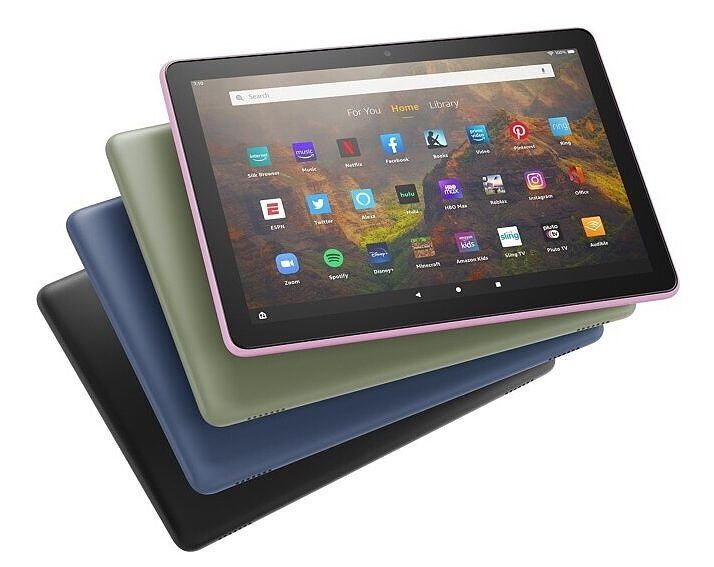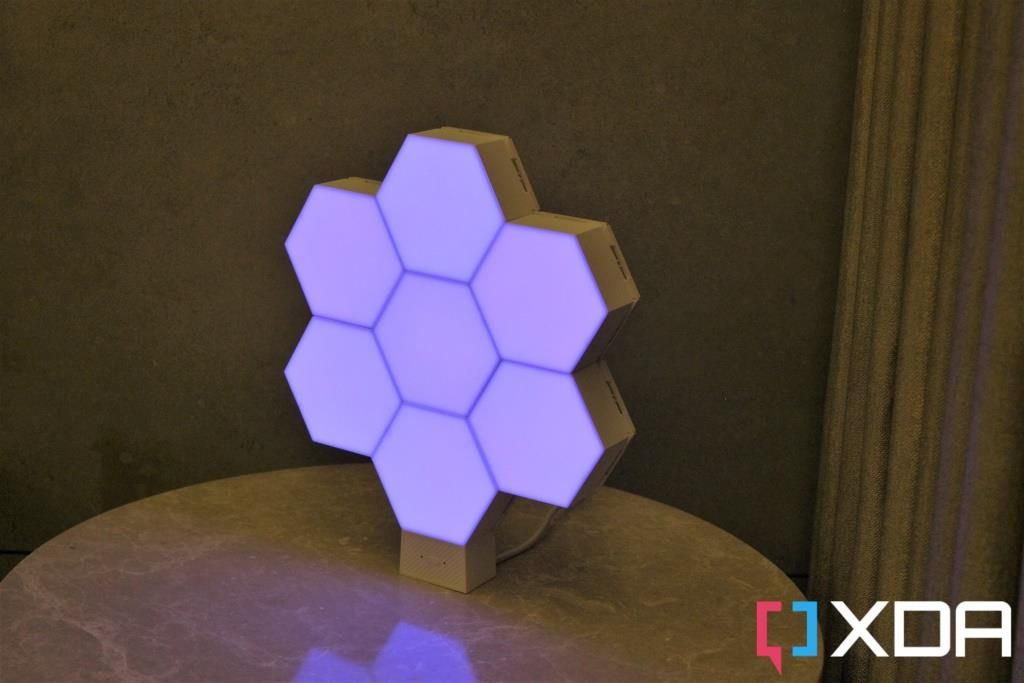Android tablets have, for a long time, been a divisive issue for Android fans. Some swear by them and love the versatility of having Android running on a bigger display. Other folks absolutely hate them, thinking Android doesn’t really scale well on tablets and that it’s best left as a phone operating system, telling you to get an iPad instead. An iPad has always had the upper hand when it comes to tablets, mostly because of the way iPadOS works.
Love them or hate them though, Android tablets are a thing. They’ve stayed through the years just like good phones and good Chromebooks have. And while we may not be able to get them as easily as we can buy a phone from carriers like AT&T, they don’t seem to be going away anytime soon. Android OEMs want to fight Apple’s current stronghold in the tablet market, and if you want to try one out yourself, we’ve collected some of the best Android tablets currently available.
With options from Samsung to Amazon, there are a lot of possibilities for everyone and every use case, so keep reading to know more.
Navigate this guide:
- Best Overall: Samsung Galaxy Tab S8 Plus
- Best Overkill: Samsung Galaxy Tab S8 Ultra
- Best for Most People: Samsung Galaxy Tab S8
- Best Mid-Range: Lenovo Tab P11 Pro
- Best Budget: Samsung Galaxy Tab A8
- Best for Media: Amazon Fire HD 10 Plus
- Best for Children: Amazon Fire HD 8 Kids Pro
- Honorable Mention: Samsung Galaxy Z Fold 3
Best Overall: Samsung Galaxy Tab S8 Plus

The biggest Android OEM that’s still going at the tablet game is Samsung, and the Galaxy Tab S8 Plus shows just how good their tablets in the premium spectrum can get. This particular model features a Qualcomm Snapdragon 8 Gen 1, up to 12 GB of RAM, and Samsung’s excellent 120Hz AMOLED panel manages to drive the show, this time around in a 12.4-inch presentation. What makes this particular tablet so good, however, is that it’s not just stretched-out Android. Samsung DeX can be enabled without requiring an external display, and with a keyboard and mouse, it actually manages to take on some productivity tasks, further helped out by the big 12.4-inch display.
With a 10,090 mAh battery driving the show, support for 45W charging, and Android 12, it’s one of the best Android tablets money can buy today.
- The Samsung Galaxy Tab S8 Plus is the middle-range tablet of the company's latest flagship lineup, featuring a 12.4-inch screen.
Also great: Xiaomi Pad 5

Before the Xiaomi Pad 5, Xiaomi had been absent from the tablet game for a number of years. The company typically makes products with great hardware, and phones such as the Mi 11 Ultra have been some of the best in the Android world. The company finally returned with the Xiaomi Pad 5, and it has an 11-inch, 2560 x 1600 IPS LCD panel that refreshes at 120Hz and can display over a billion colors, as well as support for the DCI-P3 color gamut.
Under the hood of the Xiaomi Pad 5 is a Qualcomm Snapdragon 860 SoC, an 8,720 mAh battery, and 6GB of RAM with 128 or 256GB of storage. These components are obviously not 2022, but they cement the Xiaomi Pad 5 as an affordable, upper mid-range tablet. The tablet is missing a fingerprint scanner, so you must use a PIN code, password, or the not-so-secure face unlock as security. Even without flagship specifications, all of this at a starting price of €349 is a bit of a steal.
- The Xiaomi Pad 5 is an 11-inch wide-screen tablet with a face and sides that look similar to Apple’s modern iPads. At a starting price of €349, it's a bit of a steal if you're not looking for a super high-end Android tablet..
Best Overkill: Samsung Galaxy Tab S8 Ultra

While the Galaxy Tab S8 Plus is the best tablet for everyone, the Galaxy Tab S8 Ultra is that tablet that packs just a bit more in every department, though at a higher premium. It packs the same Snapdragon 8 Gen 1 chipset and the same speakers, though a lot of the rest of the device has been tweaked. This has up to 16GB of RAM, a larger 14.6-inch 120Hz AMOLED panel, and a dual front-facing camera system. This is an overkill tablet that most people don’t need, though if you need one of the largest screen tablets around, then maybe this is for you.
- The Samsung Galaxy Tab S8 Ultra is the highest-end tablet of the company's latest flagship lineup, featuring a 14.6-inch screen.
Best for Most People: Samsung Galaxy Tab S8

Samsung is pretty much at the top of the Android tablet game, which is why the Samsung Galaxy Tab S8 is also taking yet another top spot based on specifications and quality. It’s pretty much the same package as the Galaxy Tab S7, except in a considerably smaller package. Most of the internals are kept as-is, except we also now get an 11-inch LTPS TFT display (also at 120Hz, by the way) instead of a 12.4-inch AMOLED panel. Whereas the Tab S8 Plus was suitable to be used as more of a laptop replacement than an actual tablet at that size, the Galaxy Tab S8’s size is way more versatile and portable, and you can still use it with DeX, which is Samsung’s desktop mode if you really wanted to.
The same Snapdragon 865+ CPU, up to 8 GB RAM, and the same exact software are also in tow, with the only immediate difference being the smaller 8,000 mAh battery, which is partly due to the smaller display.
- The Galaxy Tab S7 also comes in a smaller 11-inch flavor while still keeping most of the stuff that makes the bigger model so good, like the same 120Hz panel, S-Pen support, DeX desktop mode, and Snapdragon 8 Gen 1 processor.
Best Mid-Range: Lenovo Tab P11 Pro

The Lenovo Tab P11 Pro is really as good as it gets for a tablet with mid-range specifications. Lenovo is a pretty big fish in the Android ecosystem, being the parent company of Motorola and also making some smartphones of their own. They also make tablets every once in a while, and the Tab P11 Pro is currently the best one in their lineup. Featuring an 11.5-inch OLED display and internals such as a Snapdragon 730G processor and up to 6 GB of RAM and 128 GB of storage, the Tab P11 Pro is decidedly a mid-range device at heart, but it excels in aspects such as display quality and battery life thanks to the 8,600 mAh battery inside.
It runs Android 10, features 20W fast charging, and does the job. Lenovo is trying to fill a gap here as there are relatively very few actual tablets with these specifications, and so far they’ve done a pretty good job. While we would’ve liked to see improvements in its software, it’s clearly one of the best Android tablets you can get.
- The Lenovo Tab P11 Pro is a decent enough tablet and a decidedly mid-range Android device with a big screen: there's a Snapdragon 730G, up to 6 GB of RAM, an 8,600 mAh, and runs Android 10.
Best Budget: Samsung Galaxy Tab A8

Samsung doesn’t just make flagship tablets. In fact, flagship tablets are actually a rather new venture for them, given that the Galaxy Tab lineup has been going since 2010. The Samsung Galaxy Tab A8 belongs to Samsung’s lineup of lower-end tablets. And honestly? It’s not even horrible. There’s a 1920×1200 TFT LCD panel here, a Unisoc T618 chipset (which Samsung says is 10% faster than the previous Snapdragon 662), up to 128 GB of storage, and 4 GB of RAM, and Android 11 based on One UI. Hopefully, soon it should also be fully upgradeable to Android 12.
The Samsung Galaxy Tab A8 is a good option for everyone that wants a basic Android-powered device with a big display, which is why it’s making our list of the best Android tablets currently available.
- The Samsung Galaxy Tab A8 is a decent offering from Samsung in the budget space, with a 1920x1200 TFT LCD panel, a Unisoc T618 chipset, respectable internal specifications, and an excellent price tag to match.
Best for Media: Amazon Fire HD 10 Plus

If you’re looking for a seamless Android experience like the one you’ll get in a smartphone, Amazon’s Fire tablets are not a viable option to look into. While the software is Android-based, you don’t get Google services and you won’t be able to grab apps from the Play Store, not to mention that the internals are barely up to spec, meaning that anything intensive you’re planning to do might be a less than stellar experience. But Amazon is not selling you these tablets for doing that. It’s meant for you to watch movies, series, and videos, and for that, it does the job more than well.
It’s a media consumption-capable device that doesn’t break the bank, which is why we’re adding it as one of our best Android tablets available.
- Amazon's newest Fire HD 10 Plus tablet is an amazing option for anyone looking to buy a tablet for watching videos, movies, tuning into video calls, and more, and the newest model adds features like wireless charging while keeping the price on check.
Best for Children: Amazon Fire HD 8 Kids Pro

Finally, if you’re a parent and want to get your kid their first tablet as a toy, the Fire HD 8 Kids Pro is an excellent option. We chose the HD 8 version because we think that it’s the sweet spot between specifications, storage, size, and pricing for most kids. Specs-wise, it’s pretty much an Amazon Fire HD 8 with a thick, kids-friendly case to protect against drops and bumps, and it also comes with an adjustable kickstand. Amazon also offers a 2-year “worry-free” warranty for these, meaning that if your kid manages to break it, you can return it and Amazon will replace it for free.
While it’s not up to spec for anything really demanding, it’s still one of the best Android tablets for kids, as it allows them to get games, watch educational videos, and more. Note that this also does not have the Google Play Store on it.
- The Amazon Fire HD 8 Kids Pro is probably the best balance of performance, price, size, and durability for children aged 6 to 12, with a quad-core CPU running at 2.0 GHz, up to 32 GB of storage, and an 8-inch display for playing some light games
Honorable Mention: Samsung Galaxy Z Fold 3

Wait, what is a phone doing on this list? Well, it does technically count as a small tablet as well, as the phone unfolds to reveal a 7.6-inch internal display. In fact, Samsung is clearly playing that game here, as these phones with large foldable displays blur the line between a phone and a tablet more than ever. Especially now that the Galaxy Z Fold 3 has fixed many of the flaws that plagued the first-gen Galaxy Fold and the Z Fold 2, this should be a good option for people actually looking for a smaller tablet with top-of-the-line specifications—and don’t really bat an eye at expensive stuff.
It’s one of the best Android tablets and, incidentally, one of the best Android phones as well. That’s foldables for you.
- The Galaxy Z Fold 3 is Samsung's latest foldable phone which has support for the S Pen.
We have a lot of options here for everyone, but those with a budget of over $500 should be taking a look at the Galaxy Tab S7 lineup. As I said before, the Android tablet competition is currently pretty much non-existent, and only a few companies have managed to put out products worth considering. But if you’re not a fan of Samsung, Lenovo also has a decent option with their Tab P11 Pro, and Amazon has a few devices under its belt too, which actually sell like hotcakes but will probably let you down if you’re looking to do more intensive tasks on it.
Of course, if you do want the best possible tablet out there right now, look beyond Android and see if you can pick up the new Apple iPad Pro 2021. Sorry Android fans, but it’s the truth.
The post These are the Best Android Tablets to buy in 2022 appeared first on XDA.
from XDA https://ift.tt/zZGVtDP
via IFTTT














































